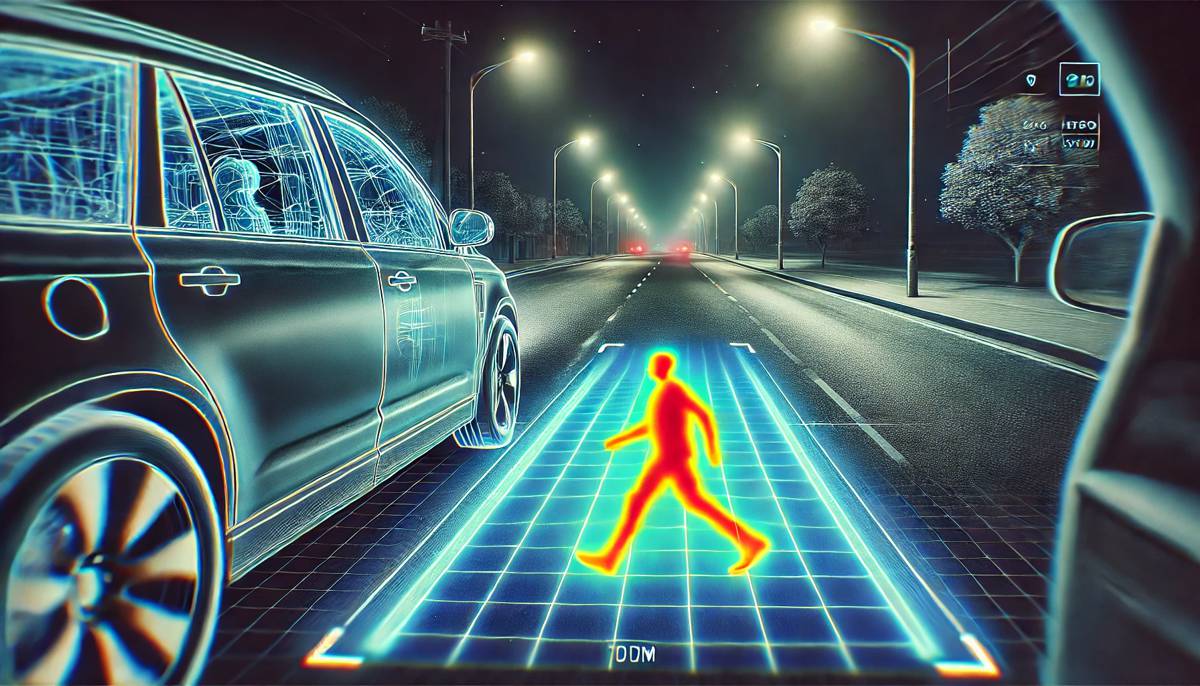Teledyne FLIR and VSI Labs Lead the Charge in Thermal Vision for Safer Roads
The race to meet new pedestrian automatic emergency braking (PAEB) standards by 2029 is heating up, and Teledyne FLIR, alongside VSI Labs, is driving innovation to ensure safety isn’t left in the dark—literally.
Recent tests conducted at the American Center for Mobility (ACM) in Michigan have showcased how thermal imaging technology can help automakers meet the Federal Motor Vehicle Safety Standard (FMVSS) No. 127 requirements for night-time PAEB systems.
This regulation mandates that by September 2029, all passenger cars and light trucks weighing up to 10,000 pounds must integrate PAEB systems capable of detecting pedestrians in varying lighting conditions and at increased speeds. With pedestrian fatalities peaking at night—77.7% of incidents in 2022 occurred after sunset—it’s a critical step forward.
The National Highway Traffic Safety Administration (NHTSA) has proven that meeting these benchmarks is feasible. Yet, tests show existing state-of-the-art systems, which rely on radar and visible cameras, often struggle in low-visibility scenarios.
Breaking Down the Test Results
VSI Labs, an industry leader in automated driving research, put a Ford Fusion Hybrid equipped with a cutting-edge thermal-fused PAEB system through its paces alongside three 2024 commercial off-the-shelf (COTS) vehicles. Here’s how the systems stacked up:
Daytime Performance:
- Both the thermal-fused and traditional COTS systems performed flawlessly during daylight tests.
Nighttime Performance:
- The thermal-fused PAEB system passed all tests, showcasing superior detection capabilities regardless of lighting conditions.
- In contrast, all three 2024 COTS systems failed at least two nighttime scenarios, exposing the limitations of relying solely on radar and visible cameras.
A significant component of the testing included thermally active pedestrian mannequins (PTMs), designed to replicate a human thermal signature. These provided a realistic challenge for the PAEB systems and underscored the value of thermal imaging in accurately detecting pedestrians.
Thermal Imaging: The Edge Automakers Need
Thermal imaging technology, like Teledyne FLIR’s longwave infrared (LWIR) automotive cameras, delivers a host of advantages that go beyond traditional sensor suites.
- Enhanced Detection Range: Thermal cameras can see well beyond the reach of headlights, providing critical extra seconds for braking.
- All-Weather Visibility: They perform exceptionally in darkness, glare, smoke, and most fog conditions, where other systems falter.
- Improved Safety: By reducing false positives and extending detection ranges, thermal cameras enhance both deceleration comfort and overall safety.
“Thermal cameras offer a cost-effective solution for OEMs aiming to meet FMVSS No. 127 standards,” said Mike Walters, Vice President of Product Management at Teledyne FLIR OEM. “With their ability to see through challenging conditions, they provide advanced warning and improve braking distances.”
A Wake-Up Call for Automakers
VSI Labs’ founder, Phil Magney, didn’t mince words: “All three COTS vehicles failed at least two nighttime tests, highlighting the uphill battle current PAEB systems face in achieving FMVSS No. 127 compliance.” He added that real-world scenarios present even greater challenges, underscoring the importance of incorporating thermal cameras into automotive safety designs.
Magney’s observations align with the broader industry consensus: while current systems are effective during the day, they fall short when conditions become unpredictable. Thermal imaging, as proven in these tests, bridges that gap, ensuring safer roads for everyone.
Why Nighttime Safety Matters
Pedestrian fatalities have been rising steadily, with nighttime incidents accounting for a disproportionate share. The combination of higher speeds, limited visibility, and existing sensor limitations has created a perfect storm for pedestrian safety.
Key statistics:
- 77.7% of pedestrian fatalities occurred at night in 2022.
- Current PAEB systems often fail under low-light conditions or when visibility is compromised.
By integrating thermal imaging, automakers can significantly reduce these numbers, ensuring that advanced PAEB systems perform reliably in all lighting scenarios.
Testing the Future
The rigorous tests conducted by VSI Labs were no small feat. Held on 10-11 September 2024, the trials took place at ACM’s state-of-the-art facilities. Utilising heated adult pedestrian mannequins from 4activeSystems, the tests replicated real-world thermal signatures to evaluate PAEB performance.
This controlled environment allowed for comprehensive analysis, ensuring the results were both accurate and actionable. Automakers now have a clear roadmap for meeting FMVSS No. 127 requirements, thanks to the ground-breaking research and technology showcased.
Industry Leaders Driving Innovation
Teledyne FLIR, a subsidiary of Teledyne Technologies, has been at the forefront of intelligent sensing solutions since 1978. With a workforce of 4,000 worldwide, the company continues to lead the charge in thermal imaging technology for defence, industrial, and now automotive applications.
VSI Labs, established in 2014, has built a reputation as one of the industry’s top advisors for advanced safety and automation technologies. Their collaboration with Teledyne FLIR highlights the potential of combining cutting-edge research with world-class engineering.
A Brighter, Safer Future
The results are clear: thermal imaging is no longer a luxury—it’s a necessity for meeting the next generation of safety standards. With the 2029 FMVSS No. 127 deadline looming, automakers must embrace this technology to ensure compliance and, more importantly, save lives.
By integrating thermal cameras into PAEB systems, manufacturers can address current limitations, reduce pedestrian fatalities, and create a safer, more reliable driving experience for all.




















